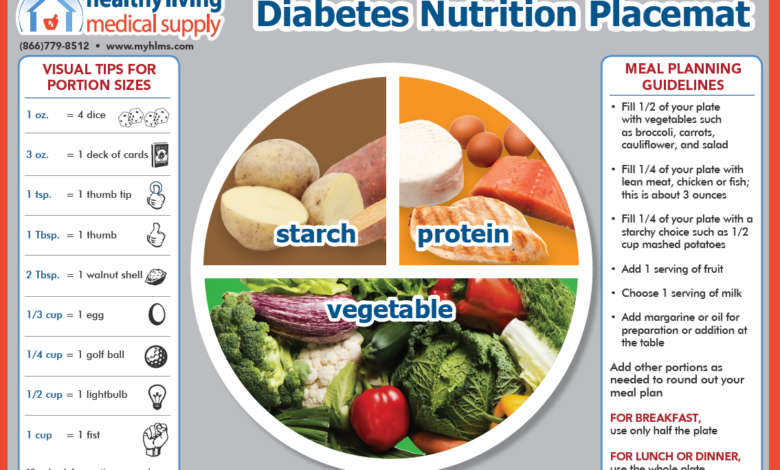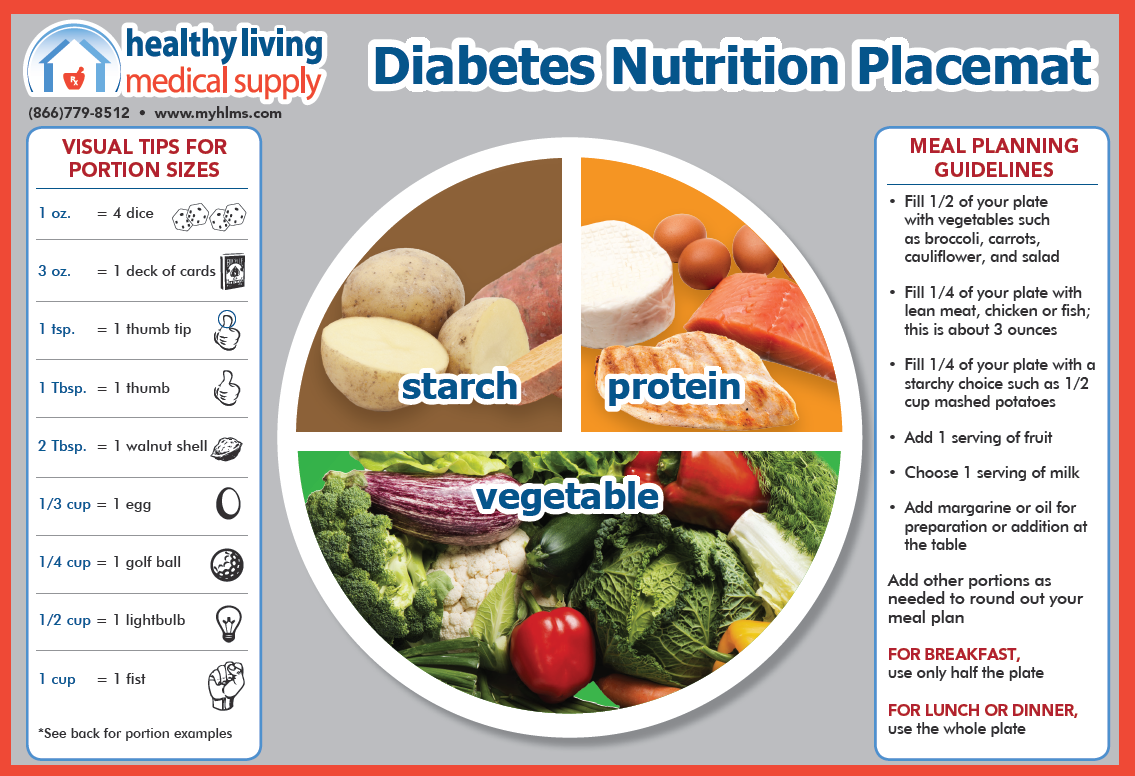
Things to Know About the Plate Diet: A Guide to Balanced Eating
Things to know about the plate diet: Have you heard of the Plate Diet? This simple yet effective approach to eating is gaining popularity for its emphasis on balanced meals and portion control. The Plate Diet, often referred to as the “MyPlate” method, is a visual guide that encourages individuals to fill their plates with a variety of nutrient-rich foods.
This approach simplifies meal planning and helps ensure you’re getting the essential vitamins and minerals your body needs.
The Plate Diet is based on the USDA’s MyPlate recommendations, which encourage a balanced intake of fruits, vegetables, grains, protein, and dairy. It’s not a restrictive diet but rather a framework for making healthy choices that can contribute to overall well-being.
What is the Plate Diet?
The Plate Diet is a simple, visual approach to healthy eating that emphasizes portion control and balanced meals. It’s a flexible and easy-to-follow dietary guideline that can help you make healthier choices without the need for complex calculations or restrictive rules.
Fundamental Principles of the Plate Diet
The Plate Diet’s core principles are based on dividing your plate into specific sections to create a balanced meal. Here’s a breakdown:
- Half of your plate should be filled with fruits and vegetables.This ensures you get a good dose of essential vitamins, minerals, and fiber, contributing to overall health and satiety.
- A quarter of your plate should be dedicated to lean protein sources.This includes options like fish, chicken, beans, lentils, tofu, and eggs, providing protein for muscle building and repair.
- The remaining quarter of your plate should be filled with whole grains.Whole grains like brown rice, quinoa, oats, and whole-wheat bread provide complex carbohydrates for sustained energy and fiber for digestive health.
Origins and History of the Plate Diet
The Plate Diet concept has its roots in the 1990s with the introduction of the “MyPlate” dietary guideline by the United States Department of Agriculture (USDA). This visual representation aimed to simplify healthy eating recommendations and promote a balanced approach.
The Plate Diet has evolved over time, with various interpretations and adaptations, but the fundamental principle of dividing your plate into sections remains consistent.
Comparison to Other Popular Diets
The Plate Diet stands out from other popular diets like the Mediterranean Diet, DASH Diet, and Ketogenic Diet by focusing on portion control and balanced meals rather than specific food restrictions or macronutrient ratios. While these other diets may emphasize certain food groups or dietary patterns, the Plate Diet offers a more flexible and adaptable approach that can be customized to individual needs and preferences.
The plate diet emphasizes balanced meals, with half your plate dedicated to fruits and vegetables. It’s a great way to ensure you’re getting your daily dose of nutrients, but sometimes you need a quick and healthy snack between meals.
Check out 10 rd approved healthy snacks under 10 for some great ideas that won’t derail your healthy eating plan. Keeping your snacks in line with the plate diet principles can help you stay on track and avoid those afternoon energy dips.
Food Groups and Portions
The Plate Diet emphasizes a balanced approach to eating, focusing on consuming a variety of foods from different food groups in appropriate portions. This ensures that your body receives the essential nutrients it needs to function optimally.
Understanding the recommended food groups and their portions on the Plate Diet is crucial for creating a healthy and sustainable eating plan. Each food group contributes unique nutrients that support different aspects of your overall health and well-being.
Food Groups and Their Portions
The Plate Diet recommends dividing your plate into four sections, each representing a different food group:
| Food Group | Portion | Importance | Examples |
|---|---|---|---|
| Fruits | 1/4 of the plate | Provide vitamins, minerals, and fiber, which contribute to healthy digestion, immune function, and overall well-being. | Apples, bananas, berries, oranges, melons, grapes, mangoes, pears, and pineapples. |
| Vegetables | 1/4 of the plate | Rich in vitamins, minerals, antioxidants, and fiber, which support healthy digestion, immune function, and disease prevention. | Broccoli, spinach, carrots, sweet potatoes, kale, tomatoes, cucumbers, bell peppers, and onions. |
| Grains | 1/4 of the plate | Provide carbohydrates for energy, fiber for digestion, and essential vitamins and minerals. Choose whole grains over refined grains for added fiber and nutrients. | Brown rice, quinoa, oats, whole-wheat bread, and whole-grain pasta. |
| Protein | 1/4 of the plate | Essential for building and repairing tissues, producing enzymes and hormones, and supporting immune function. | Lean meats, poultry, fish, beans, lentils, tofu, eggs, and nuts. |
Benefits of the Plate Diet
The Plate Diet offers a range of potential health benefits, primarily stemming from its emphasis on balanced nutrition and portion control. This approach can help individuals achieve and maintain a healthy weight, reduce the risk of chronic diseases, and enhance overall well-being.
Weight Management
The Plate Diet promotes weight management by emphasizing portion control and encouraging the consumption of nutrient-rich foods. By dividing the plate into specific portions for fruits, vegetables, protein, and whole grains, individuals can create a balanced meal that provides adequate nutrients without exceeding their calorie needs.
This approach can help individuals achieve a healthy weight or maintain their current weight by ensuring they consume a balanced diet that is both satisfying and fulfilling.
Reduced Risk of Chronic Diseases
The Plate Diet’s focus on fruits, vegetables, and whole grains can contribute to a reduced risk of chronic diseases such as heart disease, stroke, type 2 diabetes, and certain types of cancer. These food groups are rich in essential nutrients, including fiber, vitamins, minerals, and antioxidants, which play a vital role in protecting against these conditions.
A study published in the
Journal of the American College of Nutrition* found that individuals who followed a dietary pattern similar to the Plate Diet had a lower risk of developing type 2 diabetes.
Improved Energy Levels
The Plate Diet promotes sustained energy levels by providing a steady supply of nutrients throughout the day. By emphasizing complex carbohydrates, lean protein, and healthy fats, the diet ensures that the body receives a continuous source of energy, preventing energy crashes and promoting sustained vitality.
The Plate Diet is all about balance, making sure you’re getting a good mix of veggies, protein, and healthy fats on your plate. It’s a simple concept, but like any new habit, staying motivated can be a challenge. Check out this great article on how to stay motivated when starting a new habit to get some tips and tricks.
Once you’ve got the motivation down, you’ll be well on your way to mastering the Plate Diet and enjoying its benefits!
Cardiovascular Health
The Plate Diet can contribute to improved cardiovascular health by reducing the risk of high blood pressure, high cholesterol, and heart disease. The emphasis on fruits, vegetables, and whole grains provides essential nutrients, such as fiber, potassium, and magnesium, which can help regulate blood pressure and cholesterol levels.
Additionally, the diet encourages the consumption of lean protein sources and healthy fats, which are beneficial for heart health.
Blood Sugar Control, Things to know about the plate diet
The Plate Diet can help individuals with blood sugar control by promoting the consumption of foods with a low glycemic index (GI). Foods with a low GI are digested and absorbed more slowly, preventing rapid spikes in blood sugar levels.
This approach can be particularly beneficial for individuals with type 2 diabetes or those at risk of developing the condition.
Digestive Health
The Plate Diet emphasizes the consumption of fiber-rich foods, such as fruits, vegetables, and whole grains, which are essential for maintaining a healthy digestive system. Fiber helps regulate bowel movements, prevents constipation, and promotes the growth of beneficial bacteria in the gut.
The Plate Diet is all about balance, and that includes understanding how to make the most of seasonal ingredients. A key part of this is stocking your pantry with versatile staples that can elevate your spring produce. Check out this article on 5 pantry staples to maximize spring produce to see how you can transform your pantry into a spring-inspired culinary playground.
Once you’ve got your pantry essentials, you’ll be ready to embrace the full flavor of the Plate Diet with a focus on seasonal freshness.
A study published in the
American Journal of Clinical Nutrition* found that individuals who consumed a diet high in fiber had a lower risk of developing colorectal cancer.
Meal Planning and Recipes

The Plate Diet emphasizes portion control and a balanced intake of different food groups. This makes meal planning easier as you can create diverse and flavorful meals while adhering to the recommended proportions. Here are some sample meal plans and recipes that illustrate how to incorporate the Plate Diet principles into your daily routine.
Sample Meal Plans
Sample meal plans can provide a framework for incorporating the Plate Diet principles into your daily routine. Here are two examples, one for a weekday and one for a weekend:
Weekday Meal Plan
- Breakfast:Oatmeal with berries and nuts (1/2 cup oatmeal, 1/2 cup berries, 1/4 cup nuts)
- Lunch:Salad with grilled chicken or fish (1 cup leafy greens, 3 oz grilled chicken or fish, 1/2 cup vegetables)
- Dinner:Salmon with roasted vegetables (4 oz salmon, 1 cup roasted vegetables, 1/2 cup brown rice)
- Snacks:Fruits, yogurt, or a handful of nuts (1/4 cup fruits, 1/2 cup yogurt, 1/4 cup nuts)
Weekend Meal Plan
- Breakfast:Scrambled eggs with whole-wheat toast and avocado (2 eggs, 1 slice whole-wheat toast, 1/4 avocado)
- Lunch:Leftover salmon with roasted vegetables (4 oz salmon, 1 cup roasted vegetables, 1/2 cup brown rice)
- Dinner:Chicken stir-fry with brown rice (4 oz chicken, 1 cup vegetables, 1/2 cup brown rice)
- Snacks:Trail mix, fruit salad, or a smoothie (1/4 cup trail mix, 1 cup fruit salad, 1 smoothie with fruits, vegetables, and yogurt)
Recipes
Here are some recipes that exemplify the Plate Diet principles. These recipes offer diverse and flavorful options, highlighting the versatility of the Plate Diet approach:
Mediterranean Quinoa Salad
This salad is packed with protein, fiber, and healthy fats. It can be served as a light lunch or a side dish. Ingredients:
- 1 cup cooked quinoa
- 1/2 cup chopped cucumber
- 1/2 cup chopped bell pepper
- 1/4 cup chopped red onion
- 1/4 cup crumbled feta cheese
- 1/4 cup chopped Kalamata olives
- 2 tablespoons olive oil
- 1 tablespoon lemon juice
- Salt and pepper to taste
Instructions:
- Combine all ingredients in a large bowl and toss to coat.
- Refrigerate for at least 30 minutes before serving.
Salmon with Roasted Vegetables
This recipe features salmon, a rich source of omega-3 fatty acids, and roasted vegetables, offering a healthy and flavorful meal. Ingredients:
- 4 oz salmon fillet
- 1 cup mixed vegetables (broccoli, carrots, Brussels sprouts)
- 1 tablespoon olive oil
- Salt and pepper to taste
Instructions:
- Preheat oven to 400°F (200°C).
- Toss vegetables with olive oil, salt, and pepper.
- Spread vegetables in a single layer on a baking sheet.
- Place salmon fillet on top of the vegetables.
- Roast for 15-20 minutes, or until salmon is cooked through and vegetables are tender.
Chicken Stir-Fry
This stir-fry is a quick and easy meal that is packed with protein and vegetables. Ingredients:
- 4 oz chicken breast, cut into bite-sized pieces
- 1 cup mixed vegetables (broccoli, carrots, bell peppers)
- 1 tablespoon soy sauce
- 1 tablespoon honey
- 1 tablespoon sesame oil
- 1 teaspoon cornstarch
Instructions:
- In a small bowl, whisk together soy sauce, honey, sesame oil, and cornstarch.
- Heat sesame oil in a large skillet or wok over medium heat.
- Add chicken and cook until browned on all sides.
- Add vegetables and cook until tender-crisp.
- Pour soy sauce mixture over chicken and vegetables and cook until sauce thickens.
Considerations and Limitations
While the Plate Diet offers a simple and practical approach to healthy eating, it’s essential to consider potential challenges and limitations. These factors can affect your ability to follow the diet effectively and achieve your health goals. It’s crucial to understand that the Plate Diet is a general guideline and may need adjustments based on individual needs and circumstances.
Nutritional Deficiencies
The Plate Diet, like any dietary approach, can lead to nutritional deficiencies if not carefully planned. Certain nutrients may not be adequately consumed if individuals rely solely on the recommended food groups and proportions. For instance, individuals who are vegan or vegetarian might need to supplement their diet with vitamin B12, which is primarily found in animal products.
Similarly, people who avoid dairy products may need to include calcium-rich foods or supplements.It’s important to ensure a diverse range of foods within each food group to obtain a wider spectrum of nutrients.
Food Allergies and Intolerances
The Plate Diet might not be suitable for everyone, especially those with food allergies or intolerances. Individuals with allergies to specific foods, such as peanuts, shellfish, or gluten, need to avoid these foods altogether. Similarly, people with intolerances to lactose or gluten may experience digestive discomfort if they consume these foods.
In such cases, it’s crucial to consult with a registered dietitian or allergist to develop a personalized meal plan that accommodates these restrictions.
Cultural Preferences
The Plate Diet may not align with all cultural food preferences. Some cultures have dietary practices or traditions that differ from the Plate Diet’s recommendations. For example, some cultures may have specific dietary restrictions based on religious beliefs or cultural norms.
It’s essential to respect these cultural preferences and find ways to adapt the Plate Diet to accommodate them. This might involve exploring alternative food sources within the recommended food groups or incorporating culturally appropriate dishes that align with the Plate Diet’s principles.
Consulting a Healthcare Professional
Before starting any new diet, including the Plate Diet, it’s essential to consult with a healthcare professional. This is especially important for individuals with underlying health conditions, such as diabetes, heart disease, or kidney disease. A healthcare professional can assess your individual needs, provide personalized advice, and monitor your progress.
They can also help you identify any potential risks or limitations associated with the Plate Diet.
Plate Diet Variations: Things To Know About The Plate Diet
The Plate Diet, with its emphasis on balanced portions and diverse food groups, is a flexible framework that can be adapted to suit individual preferences and dietary needs. This adaptability has led to the emergence of various Plate Diet variations, each with unique characteristics and benefits.
Mediterranean Plate Diet
The Mediterranean Plate Diet is a popular variation that draws inspiration from the traditional dietary patterns of people living in the Mediterranean region. It emphasizes the consumption of fruits, vegetables, whole grains, legumes, nuts, seeds, olive oil, and fish, while limiting red meat and processed foods.
The Mediterranean Plate Diet offers numerous health benefits, including a reduced risk of heart disease, stroke, type 2 diabetes, and certain types of cancer. This diet’s emphasis on plant-based foods, healthy fats, and moderate protein intake contributes to its cardiovascular benefits.
The Mediterranean Plate Diet is generally considered a safe and healthy dietary approach for most individuals. However, people with specific dietary restrictions or allergies should consult with a healthcare professional to ensure that this variation meets their individual needs.
Vegetarian Plate Diet
The Vegetarian Plate Diet is a variation designed for individuals who follow a vegetarian lifestyle. This diet emphasizes plant-based protein sources, such as legumes, tofu, tempeh, nuts, and seeds, while excluding meat, poultry, and fish. The Vegetarian Plate Diet can provide numerous health benefits, including a lower risk of heart disease, type 2 diabetes, and certain types of cancer.
This diet is typically high in fiber, vitamins, and minerals, contributing to improved digestive health and overall well-being. The Vegetarian Plate Diet requires careful planning to ensure adequate intake of essential nutrients, particularly vitamin B12, iron, and zinc. Individuals following this variation should consult with a registered dietitian or healthcare professional to ensure they meet their nutritional needs.
Closing Notes
By understanding the fundamentals of the Plate Diet, you can empower yourself to make informed food choices that support your health goals. From weight management to reducing the risk of chronic diseases, the Plate Diet offers a practical and sustainable approach to eating that can be incorporated into your daily life.
Remember, consulting with a healthcare professional or registered dietitian can provide personalized guidance and ensure you’re meeting your individual needs.






